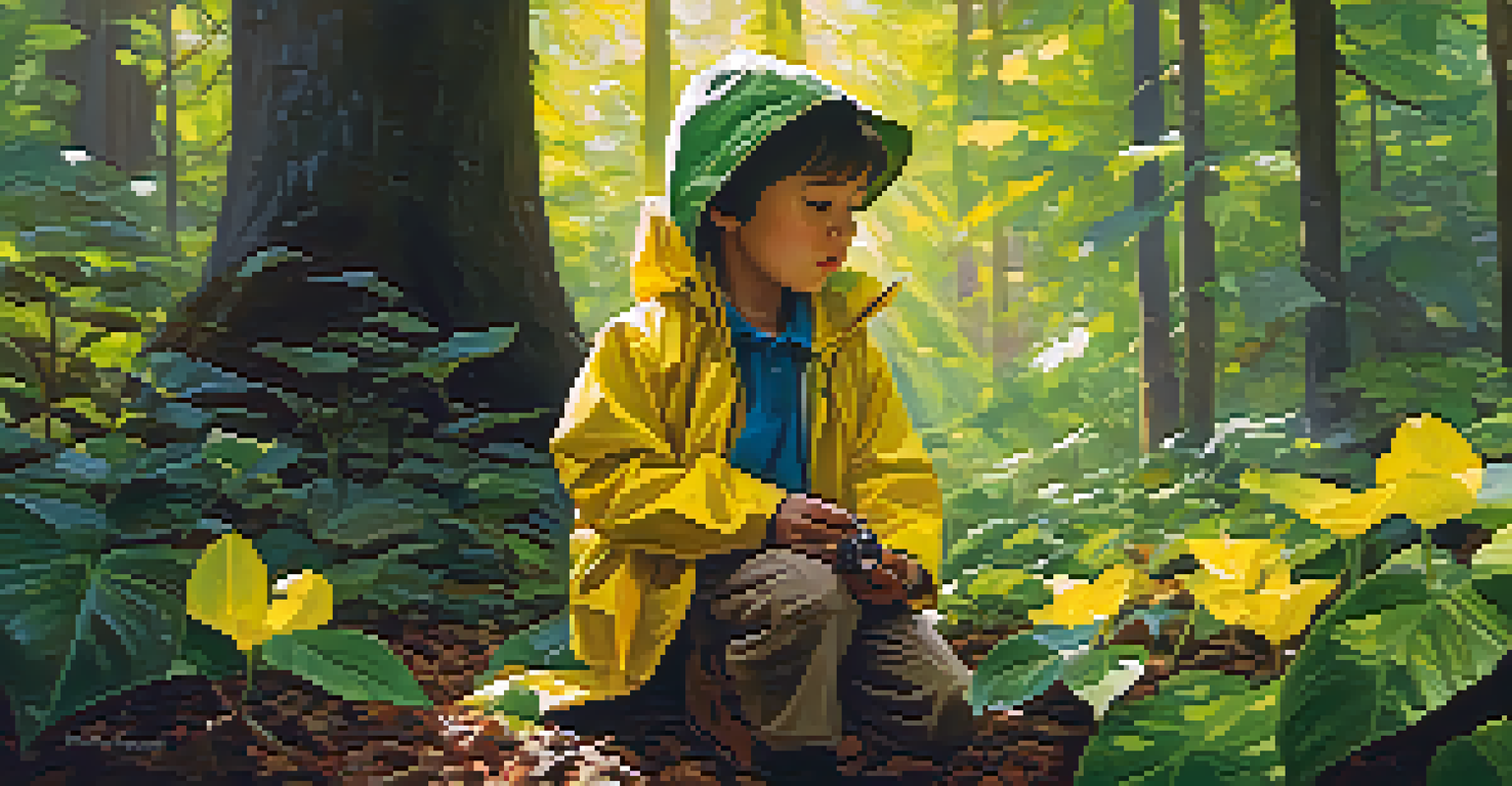Harnessing Curiosity: The Foundation of Life-long Learning

The Power of Curiosity in Learning
Curiosity is more than just a trait; it’s a powerful catalyst for learning. When we allow ourselves to be curious, we open the door to an endless world of knowledge and experiences. It motivates us to ask questions, seek answers, and explore new ideas, which is essential for personal growth.
Curiosity is the wick in the candle of learning.
Think of curiosity as a compass guiding us through the vast landscape of information. Just like a child exploring their surroundings, we can uncover hidden gems of wisdom in everyday encounters. This sense of wonder can reignite our passion for learning, encouraging us to dive deeper into subjects that fascinate us.
Moreover, curiosity fosters innovation and creativity. When we engage with the world around us and ask 'why' or 'how,' we stimulate our brains to think critically. This not only benefits our personal development but also enhances our problem-solving skills in various aspects of life.
Creating a Curious Mindset
Developing a curious mindset begins with the willingness to explore the unknown. It’s about embracing uncertainty and finding joy in the journey of discovery. This can be as simple as trying a new hobby, reading a book outside your usual genre, or asking more questions in conversations.

One effective way to nurture curiosity is to create an environment that encourages exploration. Surround yourself with diverse perspectives and experiences, whether it’s through travel, meeting new people, or engaging with different cultures. This exposure can spark new ideas and insights, enriching your understanding of the world.
Curiosity Drives Lifelong Learning
A curious mindset motivates continuous exploration and personal growth throughout life.
Additionally, practice mindfulness to enhance your awareness of the present moment. Being fully engaged in your surroundings allows you to notice details you might usually overlook, igniting your curiosity. By cultivating this mindset, you can transform mundane experiences into opportunities for learning.
Curiosity and Lifelong Learning
Lifelong learning is a commitment to continuous growth and development, and curiosity is its foundation. When we approach learning with a curious mindset, we’re more likely to seek out new skills and knowledge throughout our lives. This journey doesn’t have a finish line; it’s a lifelong adventure.
I have no special talent. I am only passionately curious.
Consider how adults often resume their education or pick up new skills later in life. This is driven by curiosity—an innate desire to understand and master new concepts. Whether it’s learning a language, picking up coding, or exploring art, curiosity fuels our drive to expand our horizons.
Furthermore, curiosity in learning can lead to greater resilience. When faced with challenges, curious individuals are more likely to view setbacks as opportunities for growth. This positive outlook not only enhances our learning experience but also prepares us for the complexities of life.
Overcoming Barriers to Curiosity
Despite its importance, many people face barriers that stifle curiosity. Fear of failure, societal expectations, or a fixed mindset can discourage exploration. Recognizing these obstacles is the first step towards overcoming them and reigniting your curiosity.
To combat fear, remember that mistakes are a natural part of the learning process. Instead of viewing them negatively, try to see them as stepping stones to greater understanding. By reframing your perspective, you can create a safe space for curiosity to flourish.
Overcoming Barriers to Curiosity
Recognizing and addressing fears and fixed mindsets can help reignite curiosity and foster exploration.
Also, challenge the notion that learning must be structured or formal. Embrace informal learning opportunities, such as workshops, online courses, or community events. This flexibility allows you to pursue interests at your own pace, making the process enjoyable and engaging.
Curiosity in the Digital Age
The digital age presents both opportunities and challenges for curiosity. With vast amounts of information at our fingertips, it’s easier than ever to explore new topics. However, this abundance can also lead to information overload, making it difficult to focus on what truly interests us.
To harness curiosity in the digital landscape, curate your online experiences. Follow blogs, podcasts, and social media accounts that align with your interests. This intentional approach helps you navigate the overwhelming sea of information while ensuring that you’re continually exposed to new ideas.
Additionally, consider using technology to connect with like-minded individuals. Online communities and forums can provide a supportive space for sharing knowledge and experiences. Engaging with others who share your curiosity can deepen your understanding and inspire further exploration.
The Role of Curiosity in Problem-Solving
Curiosity is a vital skill in problem-solving, allowing us to approach challenges with an open mind. When faced with a problem, a curious mindset encourages us to ask questions and explore multiple solutions rather than settling for the first answer. This critical thinking leads to more effective and innovative outcomes.
For instance, consider how engineers design solutions. They often start with a curious inquiry into how things work and what can be improved. This process involves experimenting, testing hypotheses, and learning from failures, ultimately leading to breakthroughs that benefit society.
Curiosity Enhances Problem-Solving
A curious approach encourages critical thinking and collaboration, leading to innovative solutions.
Moreover, curiosity drives collaboration. When team members approach problems with a curious attitude, they’re more likely to share ideas and insights. This collaborative spirit fosters an environment where diverse perspectives can lead to more creative solutions, enhancing overall team performance.
Fostering Curiosity in Others
Encouraging curiosity in others, especially in children, can have a lasting impact on their learning journey. As parents, educators, or mentors, we can create an environment where questions are welcomed and exploration is encouraged. This support lays the groundwork for a lifelong love of learning.
One way to foster curiosity is to model it ourselves. Share your interests and discoveries with those around you, and invite them to join in your explorations. By demonstrating enthusiasm for learning, you inspire others to embrace their own curiosity.

Additionally, provide opportunities for hands-on learning. Activities that encourage experimentation, such as science projects, art classes, or outdoor adventures, allow individuals to engage with the world actively. These experiences can spark curiosity and ignite a passion for learning that lasts a lifetime.